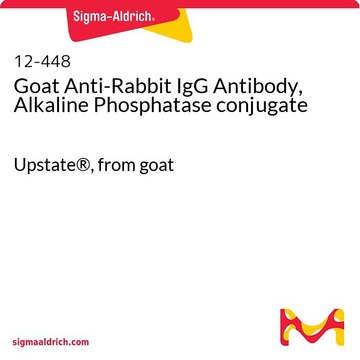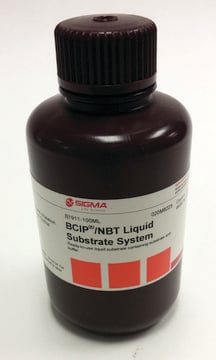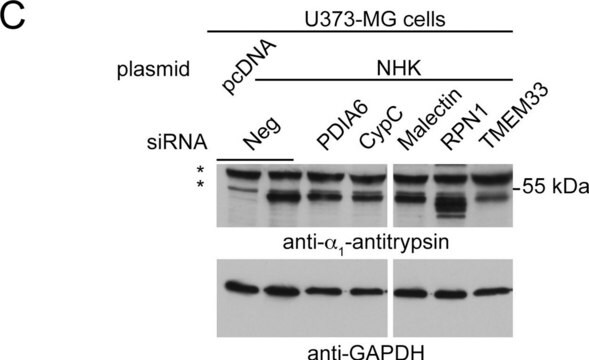AP132A
Goat Anti-Rabbit IgG Antibody, Alkaline Phosphatase conjugate
0.6 mg/mL, Chemicon®
Synonym(s):
Alkaline Phosphatase Anti-Rabbit, Anti-Rabbit IgG AP
About This Item
Recommended Products
biological source
goat
Quality Level
conjugate
alkaline phosphatase conjugate
antibody form
affinity purified immunoglobulin
antibody product type
secondary antibodies
clone
polyclonal
species reactivity
rabbit
manufacturer/tradename
Chemicon®
concentration
0.6 mg/mL
technique(s)
ELISA: suitable
western blot: suitable
shipped in
wet ice
target post-translational modification
unmodified
General description
Application
Western Blot: 1:5,000-1:50,000
Optimal working dilutions must be determined by the end user.
Secondary & Control Antibodies
Whole Immunoglobulin Secondary Antibodies
Linkage
Physical form
Reconstitute with sterile distilled water to match the volume indicated on the vial label. Centrifuge or vortex this product if it is not completely clear after standing for 1-2 hours at room temperature.
Storage and Stability
Legal Information
Disclaimer
Not finding the right product?
Try our Product Selector Tool.
signalword
Danger
hcodes
Hazard Classifications
Acute Tox. 3 Dermal - Acute Tox. 4 Inhalation - Acute Tox. 4 Oral - Aquatic Chronic 3
Storage Class
6.1C - Combustible acute toxic Cat.3 / toxic compounds or compounds which causing chronic effects
wgk_germany
WGK 3
Certificates of Analysis (COA)
Search for Certificates of Analysis (COA) by entering the products Lot/Batch Number. Lot and Batch Numbers can be found on a product’s label following the words ‘Lot’ or ‘Batch’.
Already Own This Product?
Find documentation for the products that you have recently purchased in the Document Library.
Our team of scientists has experience in all areas of research including Life Science, Material Science, Chemical Synthesis, Chromatography, Analytical and many others.
Contact Technical Service









